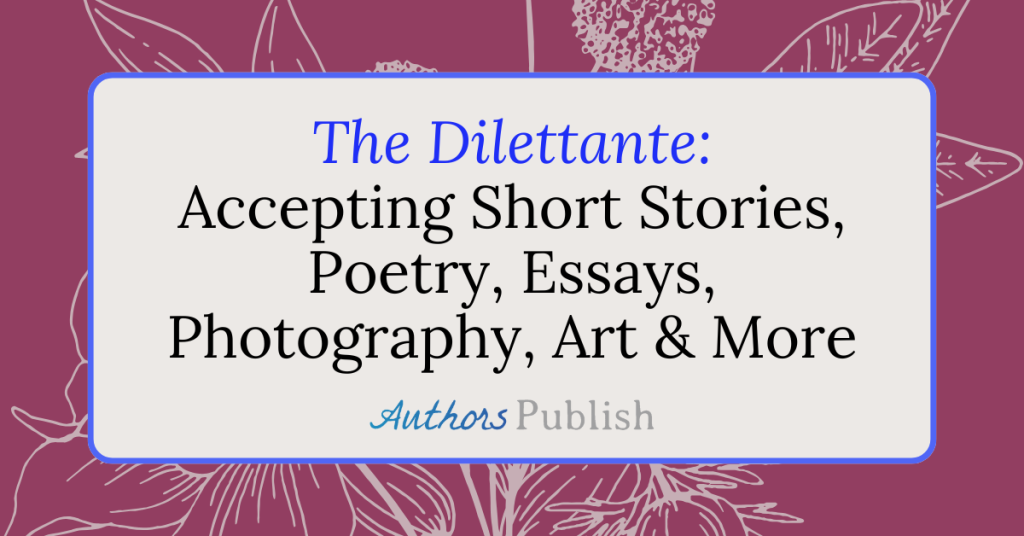I have been a contest reader, a magazine editor, a literary journal editor, and an e-book editor. In that time I have rejected thousands of poems, articles, short stories, and a couple hundred book manuscripts. In this time I have also accepted a small number of exceptional work. This of course is nothing compared to the amount work some editors have rejected.
However, in that time I have learned that there are four very common mistakes that writers make when submitting their writing.
Being aware of these mistakes has helped me submit my own writing more effectively and have a high rate of acceptance. Below are four of the most common mistakes that writers make when they submit their work.
Submitting What the Publisher Does Not Publish
What is important to keep in mind is that much of the work that I have rejected was not actually work that I would have considered publishing in the first place. Not because I had a problem with an author’s writing style, but because it explicitly did not fall into a category I was looking for.
For example, Authors Publish accepts only work about writing and publishing, we do not publish creative writing. However we regularly get poetry, memoir, and short story submissions. We have also received submissions from individuals who want to write an article about anything from car mechanics, to improving one’s grocery budget. Some of these articles and creative works are good, however, we are still not going to publish them, no matter how good they are.
Many of these submissions are prefaced with some version of the following sentence “I carefully read your submission guidelines and I feel like this piece is a perfect fit for your journal.” The content clearly reveals otherwise.
Not Having a Formal Cover Letter
I don’t mean a long cover letter, and you don’t have to end it with sincerely, but it should contain at least two sentences and those sentences should not contain the word “LOL” or other informal abbreviations. I often overthink my cover letters, so I know that one can also make the mistake of having too long of a cover letter.
If you are submitting to a literary journal your cover letter should be one paragraph long, plus your bio. If you are submitting to a manuscript publisher or an agent it should be between a page and a half-page in length.
I have never rejected a piece based solely on a cover letter, but it can be a factor if I am on the fence about accepting the piece as a whole. I often receive submissions with an attachment (containing the article presumably) but no information in the email itself. I rarely open these documents as they could just be spam.
Not Following the Guidelines
I have made this mistake before. I have included one too many poems or forgot to add my name to the top of a document. Guidelines can be detailed and hard to follow. However, some editors don’t even consider pieces that violate the guidelines in just one way. Most editors are a little forgiving.
However, read the guidelines carefully. Make sure that you are trying to abide by them. If you are submitting a manuscript to a publisher, make sure to double check the guidelines to get them right. Manuscript publishers tend to be stricter about enforcing guidelines.
If anything is in bold or italics on the submission guidelines, make sure you are not violating that guideline. For example, Authors Publish does not accept reprints, which is made very clear in our submission guidelines. However we often receive submissions that have been previously published elsewhere and if we did not directly ask the authors about the publication status, we would not have known otherwise.
Often we have asked these authors to write new articles for us, so it did end happily, but if we had published these articles not knowing they were reprints and only finding out later, that story would not have ended so well.
Following up Rudely
This has become more of an issue recently, but it is an issue. I send out polite rejection notes and I used to include one or two details about why the essay didn’t work for Authors Publish, although may work for other publications.
Over the last two years the notes these notes began to elicit rude responses, and so I stopped giving them. I just sent out a generic but polite rejection, which was then met regularly by angry demands for additional information.
I don’t take rude responses personally and we don’t have a blacklist, but I know other publications that do. I think it’s very important to always try to be as polite as possible, offline and on, professional or not.
As an editor many of my long-term writers are easy to work with and have gone on to become friends. If someone is initially rude it seems to indicate that a good working relationship is less likely.
In Conclusion
Ultimately, the more you submit the easier it gets and the more you realize what guidelines are commonplace and easy to prepare for. However, there is a learning curve to submitting. Most writers have to struggle through on their own. Hopefully, this article will help you jump ahead of the curve.
Bio:
Caitlin Jans is a poet, a novelist, and the editor of Authors Publish Magazine. Her writing can be found in The Conium Review, The Moth, Labletter, Literary Mama, and elsewhere. You can follow her on Facebook.






